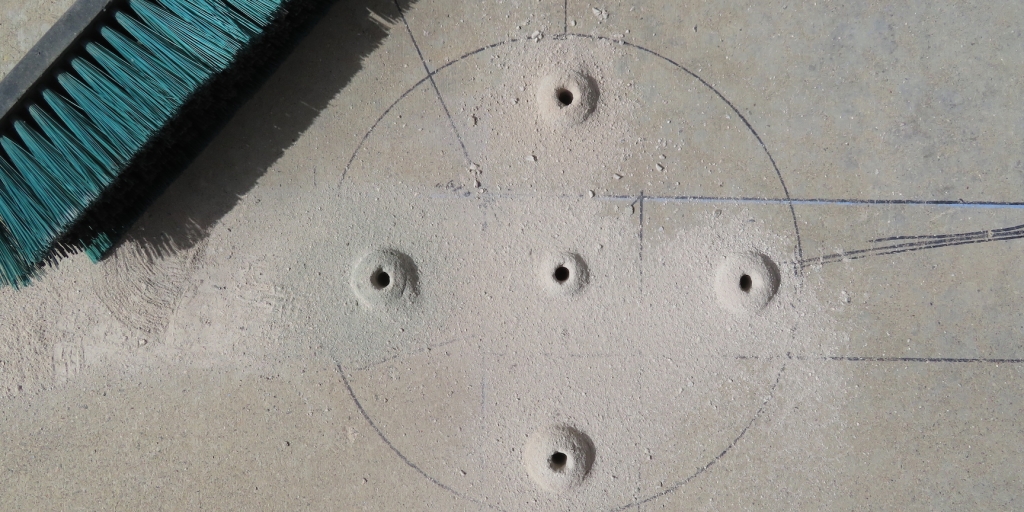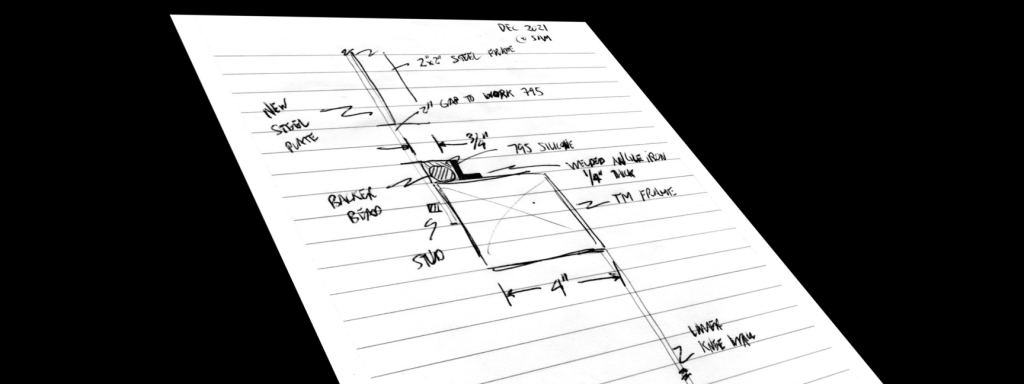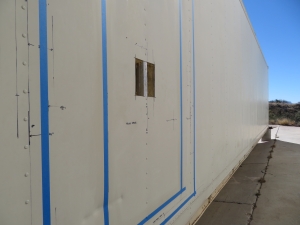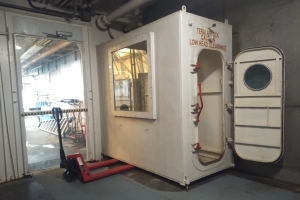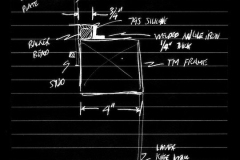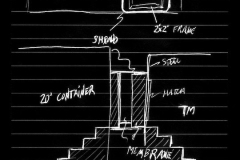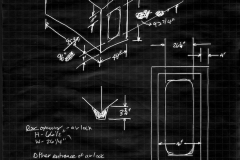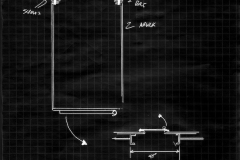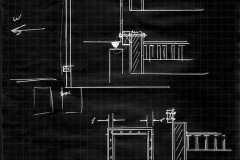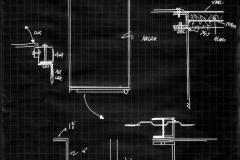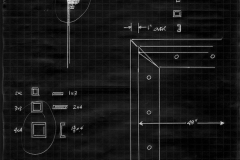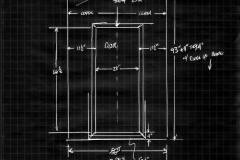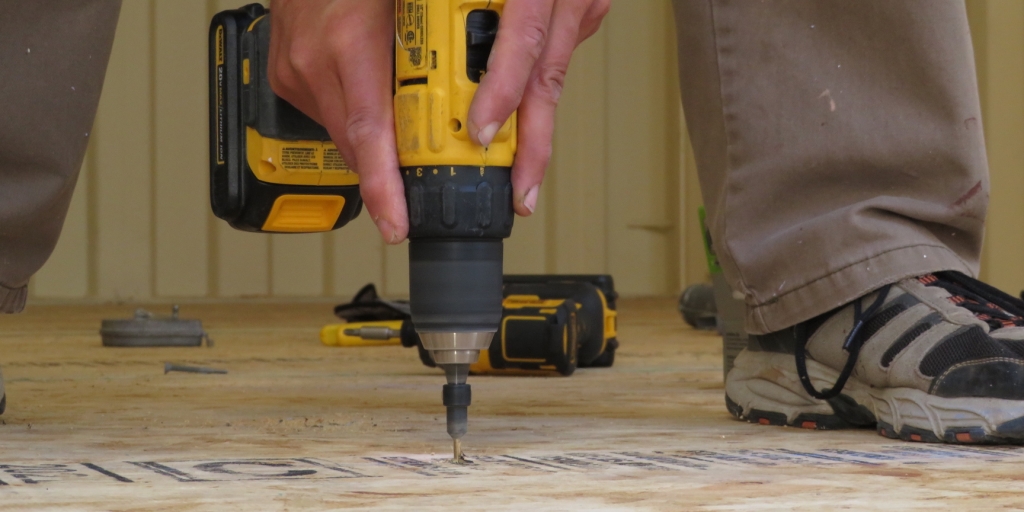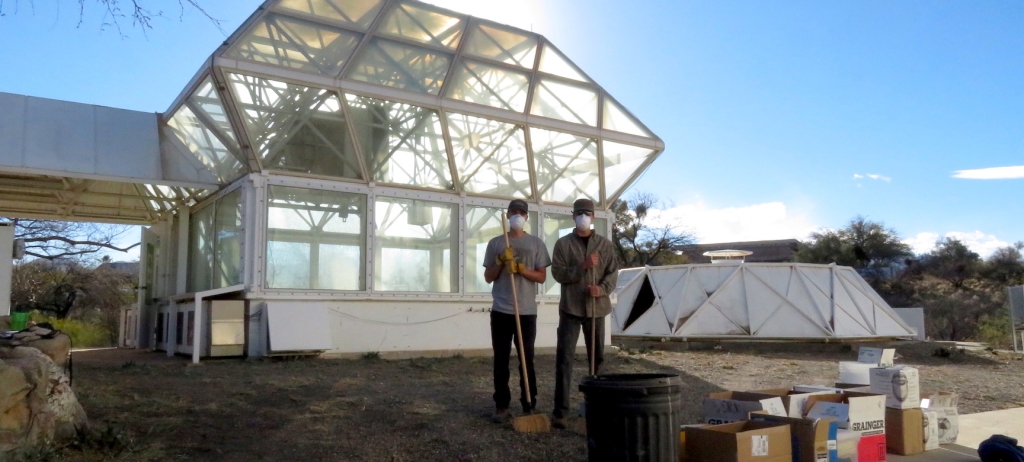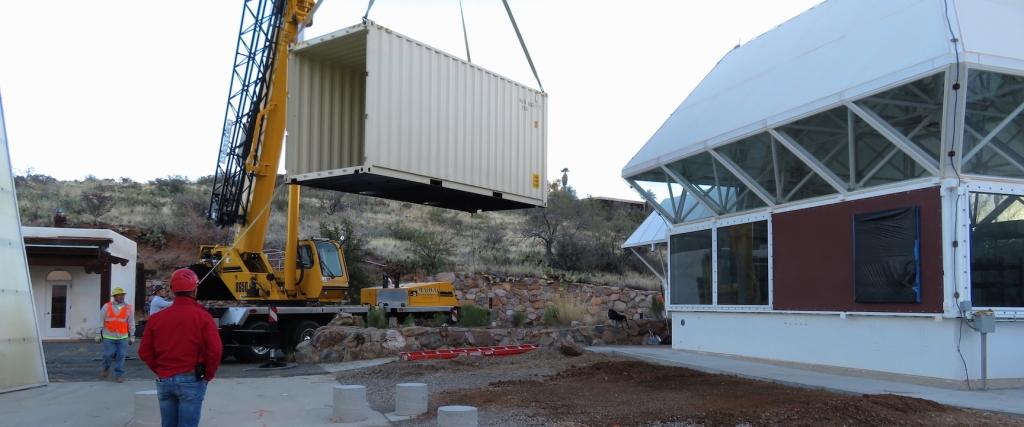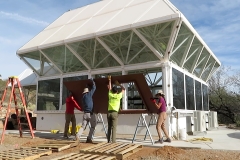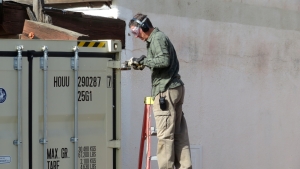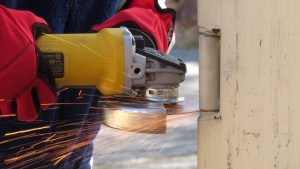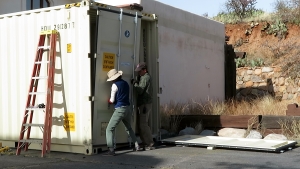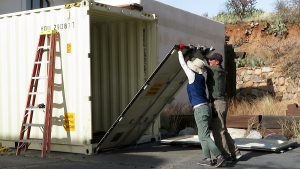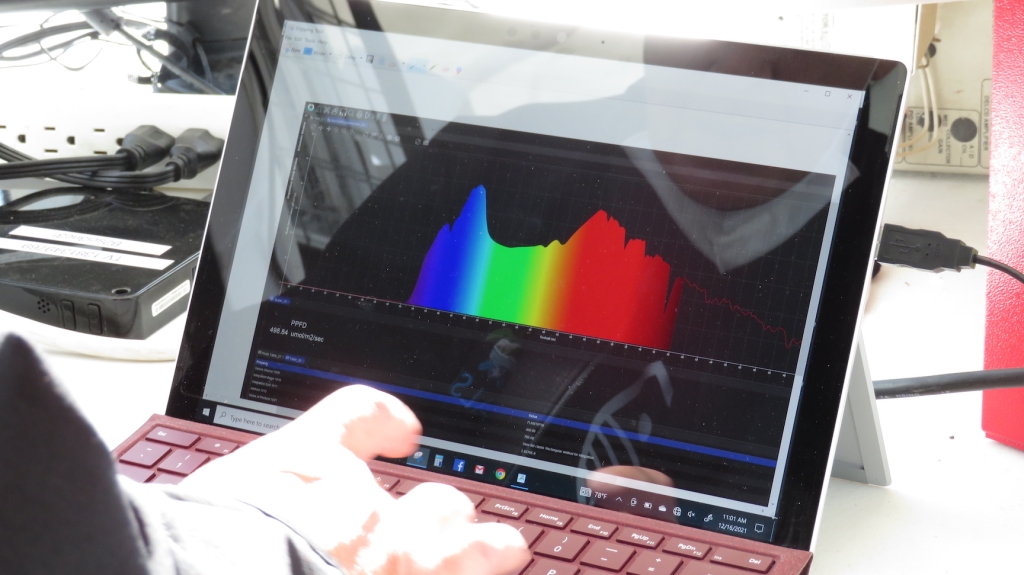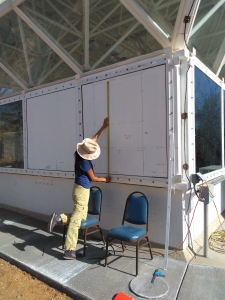Clearing a new path to SAM

With the concrete footings in place to hold the airlock it is no longer possible to drive from the main road into the large greenhouse / soon to be Mars yard. Therefore we endeavor to clear an old semi-paved path on the south side of the greenhouse structure to the concrete slab south of the Test Module lung. This space is, in theory, large enough for a concrete truck to enter, and for a cherry picker to turn about.
The effort was initiated in December with the removal of a few trees and brush, and continued with the total clearing of the landscape, and subsequent disassembly of the scaffolding and machinery used to open and close two rows of greenhouse shutters. The two south side rows are now screwed shut so as to not buffet in the wind. The upper of the two rows on the north is also removed and secured. We cut the steel poles down to retain only the lower row of articulating louvers such that we can yet invoke a cooling draft in the near-future Mars yard, when coupled with the electric fans that remain in the overhead structure.
The end effect is a drastic improvement in aesthetics, form, and function.
This week we welcome our new volunteers John Zelenky and Admin Mody! John is a former high school physics instructor and collegiate football player who’s keen eye for detail, understanding of applied force, and raw strength are a welcomed measure at SAM! John will be with us on a regular basis, Tuesday and Thursday mornings. Amin will be at SAM for a week, en route from Portland Oregon and the Pacific Spaceflight group to a new job in Houston, Texas. Amin holds a Masters degree in Bioastronautics from the University of Colorado, Boulder. em>Welcome!


